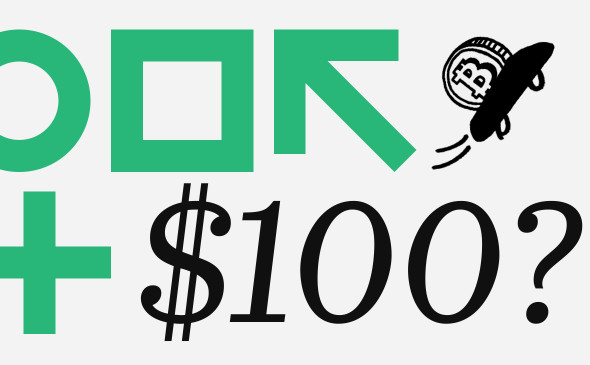"Dirty" cryptocurrencies: how to avoid problems with digital money
In the cryptocurrency wallets of users can get compromised by criminals bitcoins and other coins. In this case, all assets in the wallet are blacklisted at regulated sites. How to reduce such risks
"Dirty" coins are digital assets stolen from exchanges or used for criminal purposes. "Dirty" can be almost any type of coin: Bitcoin, Ethereum, Bitcoin Cash, Litecoin, Staplecoins or ERC-20 tokens. So far, crypto platforms are mainly focused on monitoring the "purity" of VTS and ETN, but as the AML requirements tighten, they will pay more and more attention to other cryptocurrencies.
Data on the size of crypto-crime vary greatly. According to Europol's calculations from 2018, about $5.5 billion of illegal and criminal funds in cryptocurrencies are laundered annually in Europe.
According to the latest data of Chainalysis, a company that tracks cryptotransactions, last year criminals laundered about $2.8 billion (in 2018 - $1 billion). Analysts believe that the bulk of laundered through over-the-counter brokers - agents or firms that make transactions between buyers and sellers bypassing crypto-exchange.
According to July data of the analytical company Peckshield, since the beginning of 2020, about 147,000 BTC, or about $1.5 billion, have been laundered through large crypto exchanges, and $4.5 billion in the last year.
It is difficult to say how much of these funds are marked by exchanges. But it's probably billions of dollars. There is a risk that these tools may eventually end up in the far cry from the crime of a decent user.
That is why "clean" and recently untapped coins, buyers prefer more and cost more. In August, crypto-investor Ari Paul predictedthat in a year or two most regulated cryptoplatforms would only allow withdrawals to white-listed addresses.
How "dirty" coins can get into your wallet
Regulated trading platforms and exchangers carefully monitor the turnover of "dirty" coins. They note assets seen in illegal activities.
To confuse the tracks and whitewash the coins, the attackers drive the "dirty" assets through several circles. Cryptomixers, the division of transactions into small parts, unregulated platforms, gambling platforms, prepaid cards, cryptocurrency ATMs are in progress. Often compromised assets sell at a big discount.
As a result, "dirty" crypto assets can get into the wallet of the most law-abiding user. Buy "soiled" assets on regulated exchanges and exchangers that comply with KYC/AML policy, it is impossible - such coins simply do not get on their wallets, platforms block them. But the user can easily buy "dirty" coins in an unregulated exchange, on a dubious exchange or get them as payment.
What problems are the "dirty" coins
If the user's wallet gets "dirty" coins or tokens, all the assets in it will be compromised, and the wallet - will be blacklisted. Trading platforms will not understand what coins were used by the attackers, and will automatically count all the coins in the wallet as used in illegal activities.
If it is a wallet on the stock exchange, it will be blocked until the end of the proceedings, will require to undergo verification (if you have not passed it earlier) and explain the origin of the funds. In a number of jurisdictions, such as the United States, the user may face a fine for "dirty" coins - it is believed that this is involved in money laundering. In Russia and the CIS, the use of "dirty" coins is not yet prohibited.
If it's a user's wallet, the coins won't be accepted from it on any regulated platform. Exchanges exchange with each other data on stolen coins, make a blacklist of stolen assets and compromised wallets. Selling "dirty" cryptocurrencies on unregulated sites or individuals can also be difficult. If the buyer notices that the coins are "dirty", he will either refuse the deal, or ask for a very good discount.
How sites track "dirty" coins
Regulated exchanges and exchangers carefully monitor the use of compromised coins. These are the requirements of regulators: from January 2020, the EU Fifth Anti-Money Laundering Directive (AMLD5) came into force, requiring sites to monitor users' crypto-attacks, maintain their registries, share data with each other and report suspicious transactions to the authorities. National legislation is often no less stringent, and FATF members are also guided by the organization's recommendations on the regulation of cryptocurrencies, formulated in June last year.
Large platforms have a dedicated department that tracks suspicious transactions. "Dirty" coins are detected by bots, automatic alert systems (alerts) and manual checks.
The use of mixers, software and services for anonymizing transactions, is also perceived by regulated sites as an attempt to launder funds and is a reason to block the account. The exchange doesn't care what the user used the mixer for. According to Chainalysis statistics, 90% of mixer users use them only for privacy, not for illegal activities. Mixers are not prohibited by international AML regulations, but exchanges are reinsured. They will not necessarily block the account, which will be seen in the use of coins passed through the mixer, but such a wallet will definitely get under control.
Exchanges mainly use third-party solutions to track suspicious transactions to optimize AML processes. The most popular solutions are from Chainalysis, CipherTrace and Elliptic. They are used by regulated exchanges and exchangers, as well as law enforcement agencies.
For example, a cipherTrace solution tracks the bulk of all digital assets. The company's system monitors cryptotransactions and assigns wallets a level of risk on a ten-point scale, depending on whether the funds were used on it in scam-projects, mixers, shopping in the Darknet, hacker attacks, extortion, drug trafficking, financing of terrorism. Unlike Chainalysis, cipherTrace can visualize transactions by graphically showing the path of dirty coins.
All compromised wallets and coins are added to the blacklist, which is accessed by the CipherTrace trading platforms using the solution. After that, exchange systems can only block "dirty" funds and close accounts, which are seen in violation of AML requirements.
What to do if your wallet is blocked
If the site has blocked the wallet for compromised coins, you need to cooperate as much as possible with support. First of all, you need to go through full verification (if it was not done before): provide photos or scans of documents confirming the identity, and the source of funds in the account.
You can prove your innocence in several ways. For example, provide screenshots showing a translation or purchase of "dirty" coins. It will be easier for the exchange to check if the "dirty" coins were bought from a bank card or through an electronic wallet. Purchases made for cash cannot be traced.
It is ineffective to quarrel - threats will not convince the security service of innocence. But a screenshot of the transaction - can.
All cases are individually reviewed by the AML-officer of the site. If the user's innocence is proven, the compromised assets will be returned to the original wallet or other user address.
How not to own "dirty" coins
There are several ways to reduce the chance of "dirty" coins accidentally getting into your wallet:
Check the origin of coins through special services and apps. For example, Chainalysis, Chainalysis KYT, Crystal, IdentityMind, Longhash, Traceer. Recently, Etherscan, a blockchain reviewer of Ethereum, added the ability to check the origin of cryptocurrencies with the ETHProtect feature. CipherTrace also has a mobile solution for tracking dirty coins;
Buy digital assets only on regulated trading platforms. In this case, you can be sure of the "purity" of purchased cryptocurrencies;
Use two wallets: one for "clean" coins from regulated platforms and mining, the other for untested coins from unreliable sources. All coins from exchanges from the popular site bestchange.com, little-known exchanges or individuals should be transferred first to the second wallet. Then, if it gets compromised assets, the coins in the first will remain untainted;
Check sender transactions and buy assets in instalments. You can ask to make a test transfer to a special wallet and check the coins in it;
Fix all your actions with cryptocurrency: transactions, recipients, time and date, platform. Then in the case of accidental purchase of "dirty" coins, you will be able to prove your own innocence.
How to get rid of "dirty" coins
There is no ideal and completely legal option to get rid of compromised assets. If you try to transfer "dirty" coins to adjustable platforms - your account will be blocked, and the wallet will be blacklisted.
You can use mixers, transfer them to a decentralized p2p platform or an unregulated exchange that does not conduct KYC/AML checks, sell for cash, scatter them over several wallets, sell on the black market. This will help get rid of compromised assets. But from the point of view of AML legislation of some jurisdictions, such actions are tantamount to money laundering. In Russia and the CIS, this issue is not specifically regulated.




Comments
Post a Comment